If you absolutely need 5 V, that is all your input is, and passive series filtering isn't enough, then a boost followed by a linear regulator does make sense. However, there is no point boosting to 12 V if you just want a clean 5 V. There are plenty of LDOs that can work with under 1 V headroom. Boosting to 6 V would provide plenty of voltage room to loose a little due to series filtering, then still provide enough for many LDO's to do their job.
A trick I have implemented a bunch of times now is to use the B-E junction of a transistor as the threshold detection above a LDO output. That's usually 600 mV or so. It's not hard to find LDOs that work with half that or less headroom. For example, here is a snippet of a schematic from a real product where I employed this trick:

The thing controlling the switcher pass element (Q1) compares the signal out of the R4/R6 voltage divider to a internal 600 mV reference to decide if the switcher output is above or below the regulation threshold. Q4 is set up so that it turns on when the "5.6V" line is the B-E drop above the LDO (IC2) output. The reason for scaling the collector of Q4 down with the divider is so that the system doesn't get fooled into thinking it is above the regulation threshold during startup when the voltage is rising and the LDO input might be 600 mV above its output even though the output is not yet in regulation. In that case Q4 still turns on, but the voltage divider prevents the feedback signal from reaching the 600 mV reference until the LDO input is close to full voltage. I've done this a bunch of times, and it has always worked very well.

